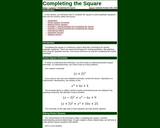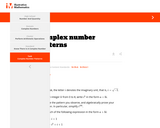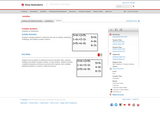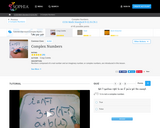
The goal of this task is to help students synthesize their knowledge of triangles.
- Subject:
- Mathematics
- Material Type:
- Activity/Lab
- Provider:
- Illustrative Mathematics
- Date Added:
- 03/28/2018

The goal of this task is to help students synthesize their knowledge of triangles.

This lesson will explain the definition of a coefficient and how to calculate one.

This task assesses a student's ability to use the addition rule to compute a probability and to interpret a probability in context.

In this Khan Academy activity, students will compare featurs of different functions.

In this Khan Academy activity, students will compare features of linear functions.

In this Khan Academy activity, students will compare features of quadratic functions.

In this Khan Academy activity, students will compare features of linear functions in word problems.

Students compare two different quadratic, square root, or cube root functions represented as graphs, tables, or equations. They interpret, contextualize, and abstract various scenarios to complete the comparative analysis.

Unit where students will solve the word problem about hiking, time, and distance as well as graph it, Compare functions represented as tables, graphs, equations, and/or verbal statements and Apply their skills by making tables and graphs of different cell phone plans.

Students will learn how to complete the square to solve quadratic equations.

Students will be able to rewrite quadratic expressions given in standard form, ax^2 + bx +c (with a not equal to 1), as equivalent expressions in completed-square form, a(x - h)^2 + k. They build quadratic expressions in basic business application contexts and rewrite them in equivalent forms.

The goal of this task is to solve quadratic equations with complex roots by completing the square.

This resource provides practice problems using completing the square.

In this Khan Academy activity, students with determine the missing constant term in a perfect square.

Interactive Jeopardy game using Completing the Square.

Unit with explanations, definitions and practice on completing the square for purposes of defining max and min.

This task serves as a possible first student exploration after an initial introduction to the form and arithmetic of complex multiplication. Students need to understand that every complex number can be expressed in the form a+bi, and understand multiplication of complex numbers at least well enough to compute, for example, i^3=i^2⋅i=−1⋅i=−i (and understand that this is in the form a+bi).

This lesson introduces and explains complex numbers, the imaginary number i, and shows how to do basic add, subtract, and multiply with them.

Texas Instruments activity dealing with complex numbers.

Numbers composed of a real number and an imaginary number, or complex numbers, are introduced in this lesson.